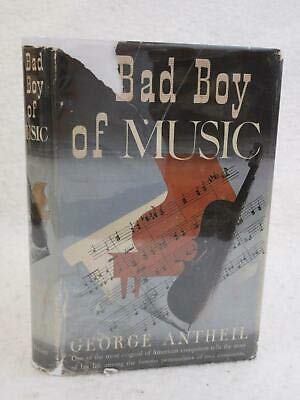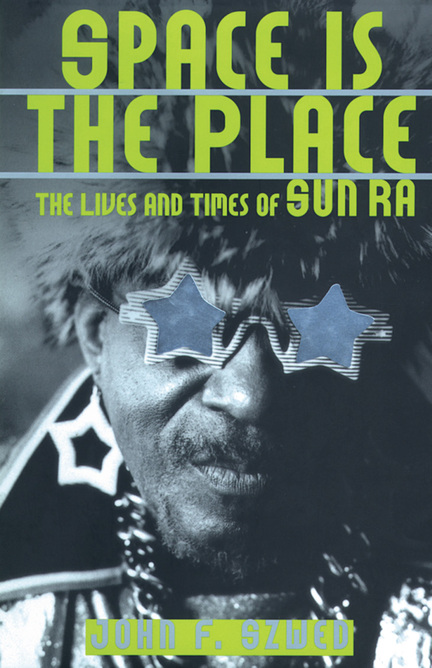George Antheil: Bad Boy of Music (1945–)
Filed under book | Tags: · avant-garde, biography, memoir, music, music history

George Antheil (1900-1959) was a radical American composer active in the early part of 20th century. He was recognised by the Parisian avant-garde literary community as a musical spokesman for their ideas. In the late 1920s Antheil participated in the operatic renaissance in Germany, and, after his return to America in 1933, he attempted to synthesize an American musical idiom in his neoromantic film, symphonic, chamber, and operatic scores.
In his autobiography, Antheil gives a fascinating account of the creative activity in Berlin, Paris, Vienna, New York and Hollywood, discussing his encounters with Igor Stravinsky, Hedy Lamarr, James Joyce, Man Ray, Ezra Pound, Sylvia Beach, W.B. Yeats, Erik Satie, Pablo Picasso, Cecil B. DeMille, Fritz Lang, Salvador Dalí and others.
First published by Doubleday, Doran & Co., Garden City, NY, 1945
Published in the UK by Hurst & Blackett, London, 1947
Reprinted by National Book Association / Hutchinson & Co., London, 1949
295 pages
via Tom Whitwell
Reviews: Milfred Norton (Hollywood Quarterly, 1946), Linda Whitesitt (American Music, 1984).
Commentary: Guy Livingston (ABC Radio National, 2015).
PDF (12 MB)
Comment (0)Albert Glinsky: Theremin: Ether Music and Espionage (2000)
Filed under book | Tags: · biography, electronic music, music, music history, politics

“Leon Theremin led a life of flamboyant musical invention laced with daring electronic stealth. A creative genius and prolific inventor, Theremin launched the field of electronic music virtually singlehandedly in 1920 with the musical instrument that bears his name. The theremin-–the only instrument that is played without being touched-–created a sensation worldwide and paved the way for the modern synthesizer. Its otherworldly sound became familiar in sci-fi films and even in rock music. This magical instrument that charmed millions, however, is only the beginning of the story.
As a Soviet scientist, Theremin surrendered his life and work to the service of State espionage. On assignment in Depression-era America, he became the toast of New York society and worked the engines of capitalist commerce while passing data on U.S. industrial technology to the Soviet apparat. Following his sudden disappearance from New York in 1938, Theremin was exiled to a Siberian labor camp and subsequently vanished into the top-secret Soviet intelligence machine, presumed dead for nearly thirty years. Using the same technology that lay behind the theremin, he designed bugging devices that eavesdropped on U.S. diplomatic offices and stood at the center of a pivotal cold war confrontation. Throughout his life, Theremin developed many other electronic wonders, including one of the earliest televisions and multimedia devices that anticipated performance art and virtual reality by decades.
In this first full biography of Leon Theremin, Albert Glinsky depicts the inventor’s nearly one hundred-year life span as a microcosm of the twentieth century. Theremin is seen at the epicenter of most of the major events of the century: the Russian Revolution, two world wars, America’s Great Depression, Stalin’s purges, the cold war, and perestroika. His life emerges as no less than a metaphor for the divergence of communism and capitalism.”
Foreword by Robert Moog
Publisher University of Illinois Press, 2000
ISBN 0252025822, 9780252025822
xvi+403+[30] pages
Reviews: Irina L.Vanechkina (Leonardo, 2001), Hans-Joachim Braun (Tech Cult, 2001), Mark Polishook (Notes, 2001), Ann Warde (Comp Music J, 2002), Kyle Gann (Am Music, 2003).
PDF (138 MB, no OCR)
Comment (0)John F. Szwed: Space Is The Place: The Lives And Times of Sun Ra (1997)
Filed under book | Tags: · biography, jazz, music, music history

“Sun Ra, a.k.a. Herman Poole “Sonny” Blount (1914–1993), has been hailed as ‘one of the great big-band leaders, pianists, and surrealists of jazz’ (New York Times) and as ‘the missing link between Duke Ellington and Public Enemy’ (Rolling Stone). Composer, keyboardist, bandleader, philosopher, poet, and self-proclaimed extraterrestrial from Saturn, Sun Ra led his ‘Intergalactic Arkestra’ of thirty-plus musicians in a career that ranged from boogie-woogie and swing to be-bop, free jazz, fusion, and New Age music. This definitive biography reveals the life, philosophy, and musical growth of one of the twentieth century’s greatest avant-garde musicians.”
Publisher Pantheon Books, New York, 1997
ISBN 0679435891, 9780679435891
xviii+476+8 pages
Reviews: Brent Staples (NYT Books, 1997), Matthew Wuethrich (All About Jazz, 2003).
PDF (23 MB)
Comment (0)
